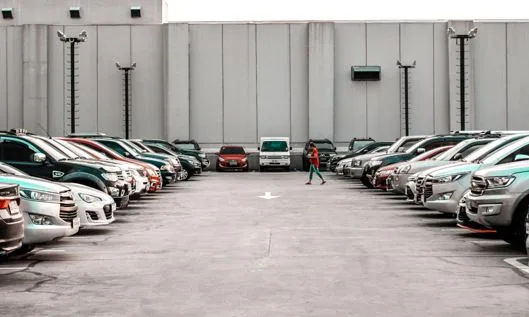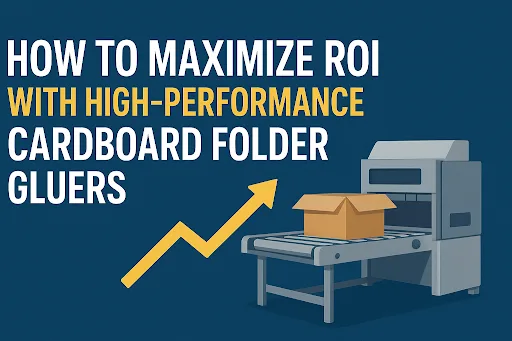Ready for a New Set of Wheels? Here’s What Comes Next
43% of drivers don’t review their leasing paperwork until the final month – a statistic that costs Americans millions annually in avoidable fees. With 2.8 million vehicle contracts expiring this year alone, understanding the crossroads ahead could save time, money, and frustration.
When a driver’s agreement nears completion, three paths emerge. They can hand back the keys, purchase their current ride at a preset price, or negotiate continued use. Each choice carries unique financial implications shaped by today’s market realities.
Recent industry shifts make this decision particularly crucial. Used car values remain volatile, while new inventory shortages affect replacement options. A well-timed choice could unlock hidden equity or prevent unexpected charges.
Smart planning starts months before the contract concludes. Drivers should assess their car’s wear against mileage limits, compare buyout prices to market rates, and evaluate personal needs. Early action creates leverage in negotiations and prevents last-minute scrambles.
This guide breaks down the critical steps for navigating this transitional phase. From understanding contractual fine print to leveraging current market conditions, readers will gain actionable strategies for making informed choices that align with their budget and lifestyle.
Understanding the End of Auto Lease Process
When a driver’s car lease approaches its completion date, several contractual obligations and opportunities come into focus. Most agreements span 24 to 48 months, with specific requirements that determine next steps. Early awareness of these provisions helps avoid last-minute surprises.
What It Means When Your Agreement Concludes
The termination process starts when the predetermined timeframe expires. Drivers must review mileage totals against their annual limits – typically 10,000 to 15,000 miles. Exceeding these thresholds often incurs per-mile charges.
Vehicle condition standards matter equally. Normal wear might include minor scratches, while damaged upholstery or dented panels could trigger fees. Many leasing companies require professional inspections 60-90 days before contract expiration.
Decoding Contractual Language
Residual value stands as a critical figure – the preset amount to purchase the vehicle outright. This amount gets locked in when signing the original lease contract, often differing from current market prices.
Other key terms include disposition fees for non-purchase returns and early termination penalties. The leasing company retains ownership throughout the agreement period, with payments covering depreciation rather than equity building.
Understanding these elements empowers drivers to make informed choices. Reviewing documents several months early allows time to compare buyout options against similar vehicles’ resale values.
Navigating Your End of Auto Lease Options
When a vehicle contract expires, smart decisions can unlock savings or create new opportunities to end of auto lease options. Drivers must weigh three primary pathways: surrendering their car, purchasing it permanently, or seeking alternative arrangements. Market conditions and personal needs dictate which choice delivers optimal value.
Returning the Vehicle vs. Lease Buyout
Surrendering the car requires meeting mileage restrictions and condition guidelines. This path avoids long-term ownership costs but demands thorough preparation. Many choose this route when wanting to upgrade models or reduce monthly expenses.
Purchasing the automobile at its predetermined residual value makes financial sense when market prices exceed this figure. Owners gain familiarity with maintenance history while bypassing new-car shopping hassles. Recent inventory shortages have made this option increasingly attractive.
Exploring Alternative Solutions
Extensions provide temporary relief for undecided drivers, though terms may change. Some companies allow transferring contracts to qualified individuals, though original signers often remain liable. Third-party sales sometimes yield profits when dealerships offer competitive buy prices.
Trading toward another model leverages positive equity in tight markets. Online platforms simplify comparison shopping for these transactions. Each alternative requires evaluating costs against lifestyle requirements and budget parameters.
Inspection and Evaluation: Your Lease End Checklist
Proper preparation for vehicle return can save drivers hundreds in unexpected charges. A systematic approach to inspections and documentation helps identify potential issues early. Timing matters – most experts recommend initiating this process 30 days before the contract concludes.
Scheduling and Preparing for the Inspection
Contact the leasing company 2-4 weeks ahead to arrange a professional assessment. Many providers offer complimentary pre-inspections to identify repairable issues. Gather maintenance records and repair receipts – these documents often influence fee determinations.
Clean the car thoroughly before evaluation. Vacuum interiors, wipe surfaces, and remove personal items. Inspectors scrutinize functionality of all features, from headlights to infotainment systems.
Assessing Wear, Tear, and Mileage
Understand what constitutes normal use versus excessive damage. Minor door dings under 1 inch or worn seat fabric typically qualify as acceptable wear. Deep scratches, cracked windshields, or stained carpets often incur fees.
Check odometer readings against contractual limits. Every extra mile could cost $0.15-$0.30 depending on the agreement. Consider third-party repairs for significant issues – independent fixes usually cost less than leasing company charges.
Photograph the vehicle from multiple angles before inspection. Time-stamped images create valuable evidence if disputes arise about condition assessments.
Lease Buyout: Is Purchasing the Car Right for You?
Owners approaching their contract’s conclusion must weigh financial data against personal needs. The decision hinges on two critical numbers: the locked-in residual value and the vehicle’s current market worth. Savvy comparisons here often reveal hidden opportunities.
Comparing Residual Value Against Market Value
Start by checking the preset buyout price in your contract. Compare this figure to estimates from Kelley Blue Book or Edmunds. If market prices exceed the residual amount, purchasing could save money.
Used car shortages have shifted this balance recently. Many drivers find their vehicle’s actual worth surpasses the agreed-upon price. Always verify local dealer appraisals for regional pricing trends.
Financing and Payment Considerations
Most buyers need loans unless paying cash. Banks and credit unions often offer better rates than leasing companies. Compare terms carefully – even small rate differences impact long-term costs.
Factor in taxes, registration fees, and repairs when budgeting. Strong credit scores unlock lower interest rates, reducing overall expenses. Remember ownership transfers require updated insurance and titles.
Final decisions should balance math with practicality. A well-maintained car with remaining warranty coverage often justifies the buyout. Those seeking new models might prefer returning keys instead.
Extending Your Lease: Pros, Cons, and Negotiations
Drivers facing a looming contract expiration often overlook flexible solutions. Extending a vehicle agreement can bridge gaps between current needs and future plans. This temporary solution requires understanding updated terms and long-term implications.
Negotiating New Terms and Mileage Limits
Contact leasing companies 60-90 days before the agreement concludes. Most allow 3-12 month extensions with adjusted monthly payments. Mileage allowances often reset annually, requiring careful calculation to avoid overage fees.
Successful negotiations leverage payment history and vehicle condition. Some dealerships reduce rates for reliable customers. Always request written confirmation of revised wear-and-tear standards.
Evaluating Financial and Future Needs
Extensions cost less than starting a new lease but prevent equity building. Compare extension fees to acquisition costs for fresh contracts. Consider maintenance expenses as the vehicle ages beyond warranty coverage.
Plan for eventual replacement during the extended period. Market fluctuations could affect future purchase options. Monthly savings today might offset higher costs when securing different transportation later.
Prepping Your Vehicle for a Smooth Lease End
Proper vehicle preparation before returning a leased car can prevent unexpected charges and streamline the process. Strategic planning ensures drivers meet contractual obligations while minimizing out-of-pocket expenses. Early action allows time to address issues that might trigger penalties.
Repairing Damage and Addressing Wear and Tear
Minor scratches or dents often cost less to fix independently than paying leasing company fees. Professional detailing removes stubborn stains and odors that could lead to cleaning charges. Compare repair quotes to potential penalties – replacing worn tires might save money versus accepting tread-depth fines.
Inspect upholstery for burns or tears requiring fabric repair. Fix chipped windshields or malfunctioning electronics before assessments. Third-party mechanics frequently offer cheaper solutions than dealership rates for mechanical issues.
Cleaning, Documentation, and Final Preparations
Gather all original items like spare keys, floor mats, and manuals. Missing accessories often result in replacement fees. Photograph the vehicle’s interior and exterior to document condition before inspection.
Verify fuel levels and remove personal belongings completely. Schedule the final dealership appointment early to avoid scheduling conflicts. Review mileage totals one last time – exceeding limits could add hundreds in overage charges.
Complete these steps 7-10 days before the return date. This buffer allows time for last-minute adjustments if inspectors flag unexpected concerns.
Final Decisions and Next Steps for a New Set of Wheels
Choosing the right path after your vehicle agreement concludes requires balancing personal needs with market realities. Compare total costs across all options – including hidden fees, mileage penalties, and taxes. A detailed decision matrix helps visualize short-term expenses against long-term benefits.
Evaluate each vehicle’s current market value against preset buyout prices. Factor in maintenance history and upcoming repair costs. Companies often charge steep fees for excessive wear, making third-party repairs worthwhile in some cases.
Consider timing when exploring new car options. Dealerships may offer incentives for returning drivers during inventory shortages. Always request written estimates for fees and compare financing rates across lenders.
Consult your leasing company about residual value calculations and transfer policies. Document every communication to avoid disputes. Informed decisions today can unlock savings or create opportunities for your next ride.




